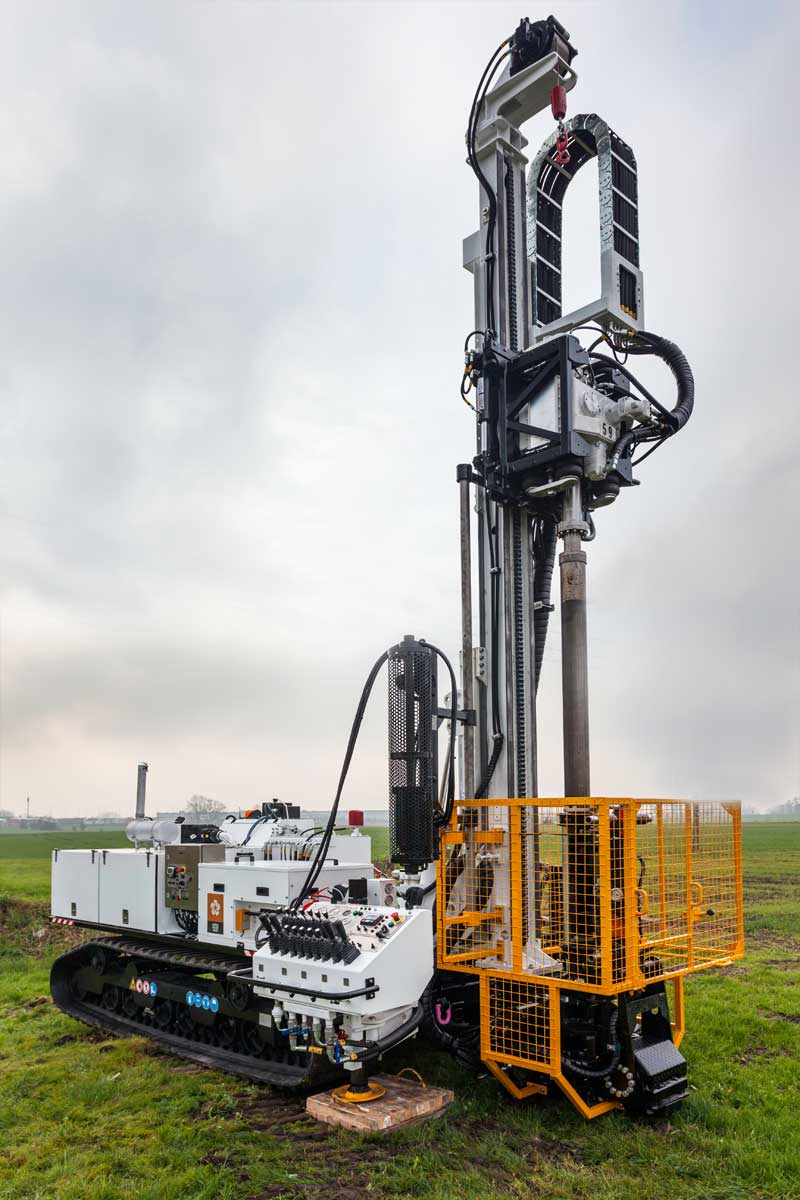NON-MINING
April 11, 2017
The Top 5 Advantages of Sonic Drilling Over Conventional Drilling
This article originally appeared in Australasian Drilling.
Sonic Drilling Over Conventional Drilling
Sonic drilling technology is not new but it is certainly still within its adoption phase. This means that drilling contractors often have to play a role in teaching their mining, water well, environmental and geotechnical clients about the technology and its advantages for their projects.
“We are very proud to be able to showcase leading-edge sonic drilling technology. There is certainly a lot of interest in sonic technology but most of our customers share a common challenge: convincing their clients that sonic is the better drilling method for a particular project.”
Jason Higgs,business development manager for Boart Longyear
Sonic drilling is faster than conventional overburden drilling methods depending on site-specific considerations
Sonic technology utilizes high frequency resonance to eliminate or minimise the friction between the subsurface material being encountered and the tooling/core barrel being advanced. This allows both efficient penetration and maximum core recovery in a variety of subsurface conditions. During drilling, the resonant energy is transferred down the drill string to the bit face at various sonic frequencies. Simultaneously rotating the drill string evenly distributes the energy and impact at the bit face.
Sonic drilling can reduce waste by up to 80%
Sonic drilling, utilizing an innovative casing advancement system, all but eliminates slough, providing improved sample integrity even through limestone, dolomite, sand and other unconsolidated material.
Sonic drilling delivers superior information
Sonic drilling provides a continuous and relatively undisturbed core sample of unparalleled quality and accuracy through any type of formation. With less than 1% deviation, drillers, geologists and environmental scientists can be sure they know exactly where a sample is from.
Access fragile terrains and hard-to-reach drill sites with the LS™250 MiniSonic™
Track-mounted rigs offer newfound mobility at remote drill sites, their goat-like versatility providing accessibility beyond the capability of even the most super duty truck. More compact drill pads – one-third to one-half smaller than conventional pads – reduce the need to remove trees and grade land to provide a workable drill site.

The LS250 MiniSonic’s weight and size make it perfectly suited for jobs in the most sensitive and fragile terrains and space-constrained environments, hard to reach or not. Its smaller footprint makes it versatile with small pads and environmentally sensitive areas, and requires less support equipment.
The rig also offers an 11 metric ton dry weight with high floatability rubber tracks. Low ground pressure (4psi) allows the drill to access more difficult terrain like marshy or wet pads, and its 24-inch (600mm) rubber tracks let it float on softer ground, further increasing its versatility and adaptability to the toughest and most environmentally sensitive terrains.
Worker safety remains everyone’s top priority
Among the LS250 MiniSonic’s safety features are an interlocked rotation barrier, reduced noise levels, a dump mast and wiggle tail, and a rod presenter. The interlocked rotation barrier automatically slows head rotation when the barrier is open.
“We want to help our customers drill better, and part of that is sharing with them the type of information and insights they need in order to help create a convincing argument for sonic drilling.”
For more information, contact your local Boart Longyear representative via www.boartlongyear.com/minisonic or call +61 1800 792 972.
Want to know more? Learn more about the LS250 MiniSonic
DISCUSSION
-
Highly energeti post, I enjolyed that a lot. Willl there be a part 2?



